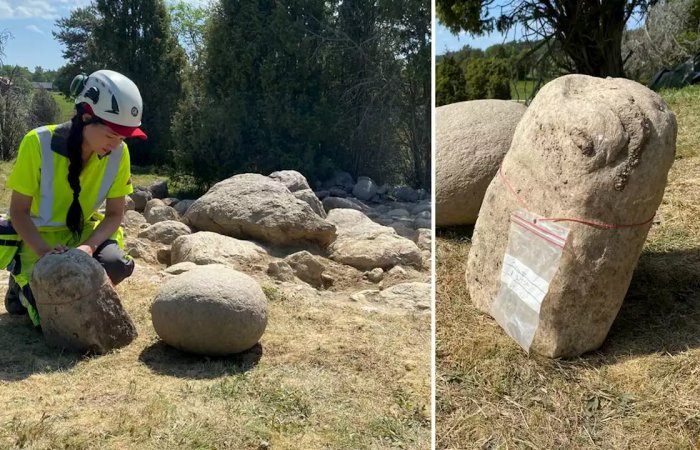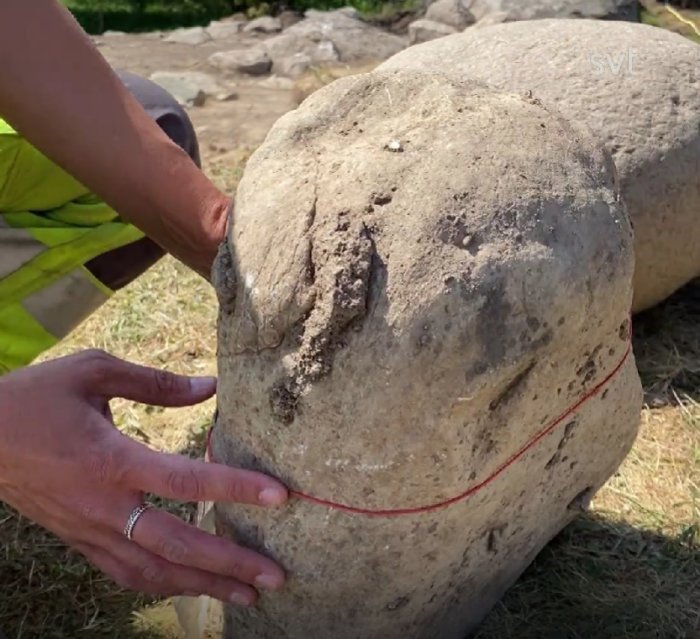Ellen Lloyd – AncientPages.com – As an archaeologist, you can expect to find some surprises everywhere. That’s what happened during recent excavations on a hill in Tystberga outside the city of Norrköping, Sweden, where scientists unearthed something eye-catching.
A new railroad will be constructed, so scientists excavated the site from May to June this year. It’s an archaeological site where researchers have previously unearthed more than 60 Viking Age graves and a settlement from the Bronze Age.

Credit: SVT
In a recent study, scientists found a grave containing two curious stones. An examination of the stones showed one was a grave ord. These stones were common in Scandinavia from the Pre-Roman Iron Age until the Vendel era. Engraved with ornaments, grave orbs were placed on an individual’s tomb. The other stone unearthed in Tystberga was shaped like a penis.
The phallus was a powerful and important symbol throughout the ancient world, but unearthing a Viking Age Phallic stone in Sweden does not happen often.
According to archaeologist Rebecka Jonsson, hundreds of similar white penis stones have been unearthed in Norway, but it is a very rare find in Sweden.

Credit: SVT
“At first sight, it looks like an elongated stone standing up, but if one looks closely, one can see several elements indicating this is really a stone that has been modified to look more like a phallus,” Jonsson explained in an interview with SVT.
When the excavation works have been completed, and all reports have been finished, the unearthed stones will be transported to a museum. In this case, these two stones will be handed over to the National Historical Museums ( Statens Hsitorisk Museer),” Jonsson explained.
Written by Ellen Lloyd – AncientPages.com Staff Writer





